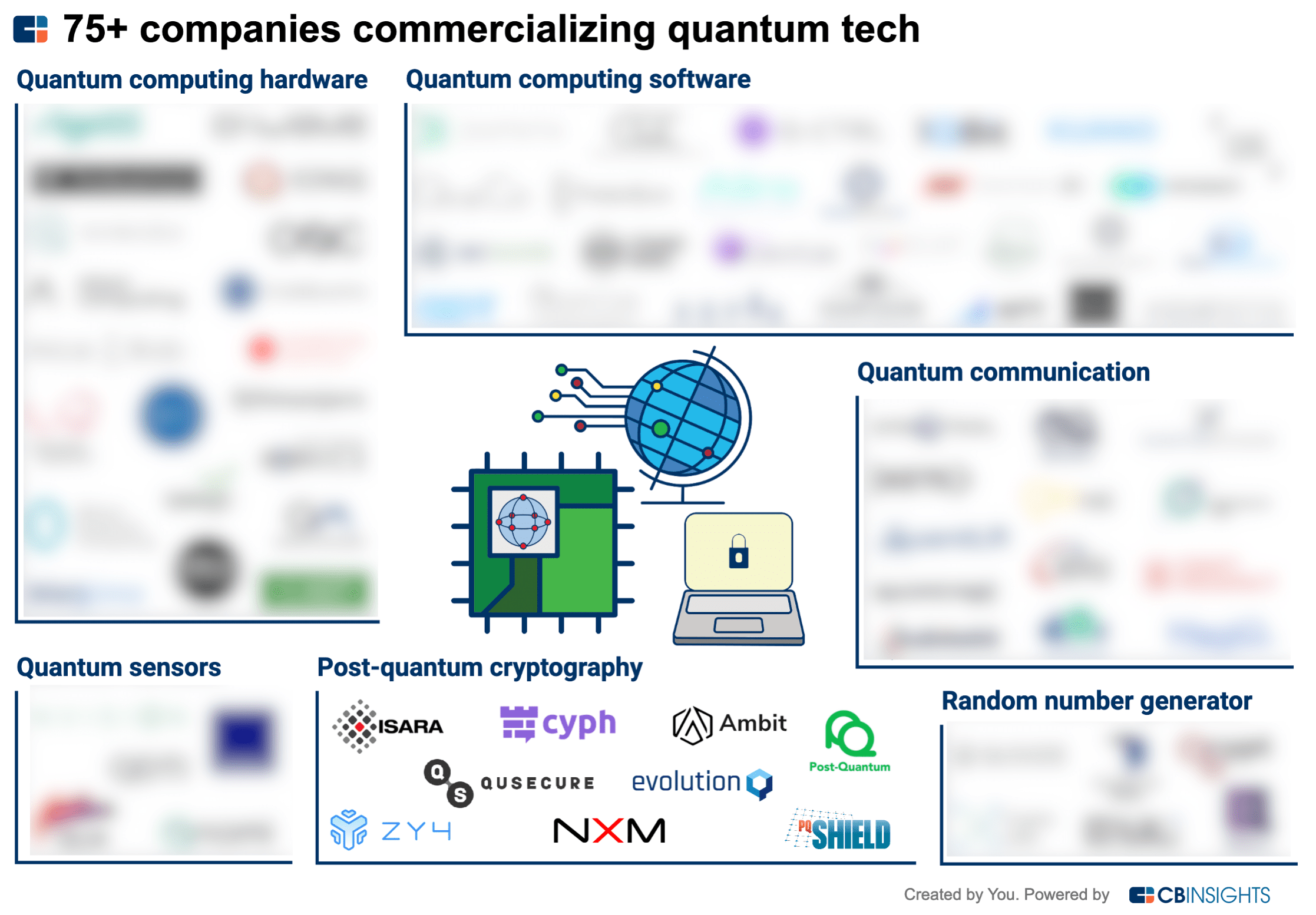Post-Quantum Cryptography: Billion-Dollar Market By 2030 Driven By New Algorithmic Standards

Table of Contents
The Quantum Threat and the Need for Post-Quantum Cryptography
Current encryption standards, such as RSA and Elliptic Curve Cryptography (ECC), are widely used to secure sensitive data across various sectors. However, these algorithms are vulnerable to the power of quantum computers. Shor's algorithm, a quantum algorithm, can efficiently factor large numbers and solve discrete logarithm problems—the mathematical foundations of RSA and ECC. This means a sufficiently powerful quantum computer could break these encryption methods, rendering our current security measures obsolete.
The potential consequences of a successful quantum attack are severe:
-
Massive Data Breaches: Sensitive personal information, financial data, and intellectual property could be exposed, leading to identity theft, financial loss, and reputational damage.
-
Financial Instability: Cryptocurrencies and financial transactions could be compromised, leading to market instability and widespread economic disruption.
-
National Security Risks: Critical infrastructure, government communications, and national defense systems could be vulnerable to attack, jeopardizing national security.
-
RSA and ECC algorithms are susceptible to Shor's algorithm, a quantum algorithm that can break widely used encryption schemes.
-
Data encrypted today using RSA and ECC could be vulnerable to decryption once sufficiently powerful quantum computers become available.
-
The need for proactive migration to PQC is not a future consideration; it's a present imperative.
Key Drivers of Post-Quantum Cryptography Market Growth
Several factors are driving the rapid growth of the post-quantum cryptography market:
Government Initiatives and Standardization Efforts
The National Institute of Standards and Technology (NIST) plays a pivotal role in standardizing PQC algorithms. NIST's post-quantum cryptography standardization project is crucial in ensuring the widespread adoption of secure and interoperable quantum-resistant algorithms. Government funding and regulations are also significantly influencing the industry's shift towards PQC. NIST's selection of specific algorithms for standardization provides clarity and confidence to organizations planning their migration strategies. The timelines set by NIST provide a roadmap for the industry, allowing companies to plan their transition effectively. Government mandates, particularly within critical infrastructure sectors, are accelerating the adoption of PQC solutions.
- NIST's post-quantum cryptography standardization process is setting industry standards for quantum-resistant algorithms.
- Significant government investments are fueling research and development in PQC.
- Regulatory pressures are increasingly driving the adoption of PQC across various sectors.
Increasing Demand from Various Sectors
The demand for PQC is increasing across diverse sectors, each facing unique security challenges:
-
Finance: Financial institutions are prioritizing the protection of financial transactions, sensitive customer data, and internal systems from quantum threats. They are actively exploring PQC solutions to safeguard against potential future attacks.
-
Healthcare: Healthcare organizations need to protect sensitive patient data, medical devices, and healthcare systems. Data breaches in the healthcare sector can have significant consequences, and PQC offers enhanced security.
-
Government: Government agencies at all levels are responsible for securing national infrastructure, communications networks, and classified information. PQC is crucial for maintaining national security in the quantum era.
-
Financial institutions are adopting PQC to protect transactions and sensitive client data from future quantum attacks.
-
Healthcare organizations are implementing PQC to secure patient records and ensure the integrity of medical devices.
-
Government agencies are increasingly adopting PQC to protect critical infrastructure and national security systems.
Technological Advancements and Algorithm Development
Significant progress is being made in the development and improvement of PQC algorithms. Several types of algorithms are being explored:
-
Lattice-based cryptography: Algorithms like CRYSTALS-Kyber and Dilithium are considered strong candidates due to their perceived security and relatively good performance.
-
Code-based cryptography: Classic McEliece is a code-based algorithm that has been around for some time and is considered relatively mature.
-
Multivariate cryptography: Algorithms such as Rainbow offer a different approach to PQC, but their security and efficiency are still under active research.
-
Lattice-based cryptography (e.g., CRYSTALS-Kyber, Dilithium) offers strong security and good performance.
-
Code-based cryptography (e.g., Classic McEliece) provides a mature and well-studied alternative.
-
Multivariate cryptography (e.g., Rainbow) offers a diverse approach, though further research is ongoing.
Challenges and Opportunities in the Post-Quantum Cryptography Market
While the future of PQC is promising, challenges and opportunities coexist:
Implementation Challenges
Migrating to PQC presents several challenges:
-
High Costs: Implementing new cryptographic systems and updating existing infrastructure requires significant investment.
-
Complexity: Understanding and implementing PQC algorithms requires specialized expertise.
-
Interoperability: Ensuring seamless interoperability between different PQC systems and legacy systems is crucial for successful migration.
-
High initial investment costs associated with migration to PQC can be a barrier for some organizations.
-
The complexity of implementing new algorithms and protocols requires specialized skills and training.
-
Ensuring interoperability between different PQC systems and existing infrastructure presents a significant challenge.
Market Opportunities
Despite the challenges, the PQC market offers significant opportunities:
-
Software and Hardware Development: There's a growing demand for PQC-enabled hardware and software solutions.
-
Consulting Services: Organizations need expert guidance to navigate the complexities of PQC implementation and migration.
-
Research and Development: Continued research and development are needed to improve the efficiency and security of existing algorithms and discover new ones.
-
Development of PQC hardware and software solutions presents a major market opportunity.
-
Consulting services specializing in PQC implementation and migration are in high demand.
-
Research and development of next-generation PQC algorithms offer promising avenues for innovation.
Conclusion
Post-quantum cryptography is not just a technological advancement; it's a critical necessity for securing our digital future. The billion-dollar market projection for 2030 reflects the growing awareness of the quantum threat and the urgent need to transition to quantum-resistant cryptographic algorithms. Government initiatives, industry demand, and technological progress are all driving the rapid expansion of this sector. While challenges exist regarding implementation, the opportunities for innovation and growth are substantial. Don't wait until it's too late – learn more about post-quantum cryptography solutions and start planning your migration strategy today to protect your organization from the quantum threat. Embrace post-quantum cryptography and secure your future in the quantum age.

Featured Posts
-
 The Ongoing Nightmare The Plight Of Families With Hostages In Gaza
May 13, 2025
The Ongoing Nightmare The Plight Of Families With Hostages In Gaza
May 13, 2025 -
 Governor Issues Strong Warning Against Controversial Texas Muslim City Plan
May 13, 2025
Governor Issues Strong Warning Against Controversial Texas Muslim City Plan
May 13, 2025 -
 O Tzortz Mpalntok Giortazei I Anodos Tis Sefilnt Gioynaitent Kai I Fanela
May 13, 2025
O Tzortz Mpalntok Giortazei I Anodos Tis Sefilnt Gioynaitent Kai I Fanela
May 13, 2025 -
 Mlb Home Run Props Best Picks And Odds For April 26th Tuckers Big Night
May 13, 2025
Mlb Home Run Props Best Picks And Odds For April 26th Tuckers Big Night
May 13, 2025 -
 Analyzing The 2025 Nba Draft Teams In Position For Cooper Flagg
May 13, 2025
Analyzing The 2025 Nba Draft Teams In Position For Cooper Flagg
May 13, 2025
Latest Posts
-
 Leonardo Di Caprios Unexpected Met Gala Date Vittoria Ceretti
May 13, 2025
Leonardo Di Caprios Unexpected Met Gala Date Vittoria Ceretti
May 13, 2025 -
 Finding Eva Longorias Searching For Spain A Viewing Guide
May 13, 2025
Finding Eva Longorias Searching For Spain A Viewing Guide
May 13, 2025 -
 Leonardo Di Caprio And Vittoria Cerettis Surprise Met Gala Appearance
May 13, 2025
Leonardo Di Caprio And Vittoria Cerettis Surprise Met Gala Appearance
May 13, 2025 -
 Watch Eva Longoria Searching For Spain Streaming Guide
May 13, 2025
Watch Eva Longoria Searching For Spain Streaming Guide
May 13, 2025 -
 Where To Stream Eva Longorias Searching For Spain
May 13, 2025
Where To Stream Eva Longorias Searching For Spain
May 13, 2025
